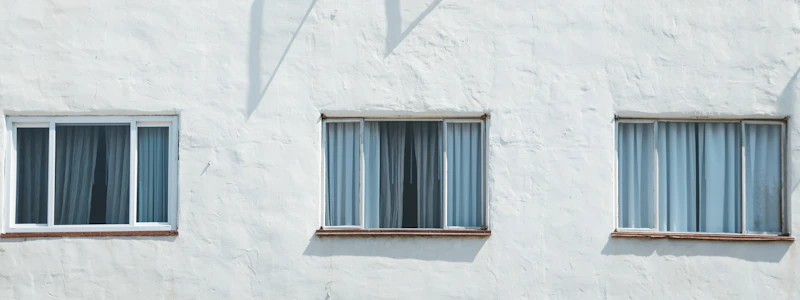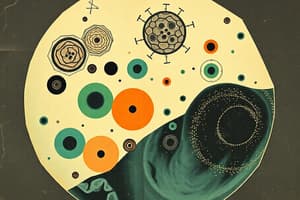Podcast
Questions and Answers
What is the primary method by which plant cells acquire energy?
What is the primary method by which plant cells acquire energy?
- Fermentation
- Photosynthesis (correct)
- Cellular respiration
- Chemosynthesis
Which of the following is true regarding the size of animal cells compared to plant cells?
Which of the following is true regarding the size of animal cells compared to plant cells?
- Animal cells are larger than plant cells
- Animal and plant cells are of equal size
- Animal cells vary greatly in size compared to plant cells
- Animal cells are smaller than plant cells (correct)
Which component is responsible for locomotion in certain cells?
Which component is responsible for locomotion in certain cells?
- Ribosomes
- Rough Endoplasmic Reticulum
- Vacuoles
- Cilia (correct)
What do lysosomes primarily contain to function effectively?
What do lysosomes primarily contain to function effectively?
What do both plant and animal cells need to perform various cellular functions and maintain homeostasis?
What do both plant and animal cells need to perform various cellular functions and maintain homeostasis?
Which structure is not typically present in animal cells?
Which structure is not typically present in animal cells?
What is the storage form of energy in animal cells?
What is the storage form of energy in animal cells?
During cytokinesis in animal cells, which structure is responsible for dividing the cell into two?
During cytokinesis in animal cells, which structure is responsible for dividing the cell into two?
What is the primary function of the eyepiece in a microscope?
What is the primary function of the eyepiece in a microscope?
What does the Lower Power Objective (LPO) typically magnify to?
What does the Lower Power Objective (LPO) typically magnify to?
Which of the following cell division processes occurs in prokaryotic cells?
Which of the following cell division processes occurs in prokaryotic cells?
What is the role of cell division in multicellular organisms?
What is the role of cell division in multicellular organisms?
What are somatic cells primarily responsible for?
What are somatic cells primarily responsible for?
What process follows mitosis during cell division?
What process follows mitosis during cell division?
Which term is associated with the production of identical cells?
Which term is associated with the production of identical cells?
What is unique about the oil immersion objective in a microscope?
What is unique about the oil immersion objective in a microscope?
What is the primary function of sclerenchyma cells?
What is the primary function of sclerenchyma cells?
Which cell organelle is responsible for controlling the passage of substances in and out of the cell?
Which cell organelle is responsible for controlling the passage of substances in and out of the cell?
What structure within the nucleus contains chromatin materials and the nucleolus?
What structure within the nucleus contains chromatin materials and the nucleolus?
Which part of the mitochondria is described as having folded inner partitions?
Which part of the mitochondria is described as having folded inner partitions?
What is the main role of nephron cells in the kidneys?
What is the main role of nephron cells in the kidneys?
What function does the Golgi apparatus perform in the cell?
What function does the Golgi apparatus perform in the cell?
What is the significance of the phospholipid bilayer in the cell membrane?
What is the significance of the phospholipid bilayer in the cell membrane?
What is the composition of cork cells that aids in water loss prevention?
What is the composition of cork cells that aids in water loss prevention?
What is the primary function of vacuoles in a cell?
What is the primary function of vacuoles in a cell?
What structure is unique to animal cells that helps organize spindle fibers during mitosis?
What structure is unique to animal cells that helps organize spindle fibers during mitosis?
Which of the following is responsible for locomotion in animal cells?
Which of the following is responsible for locomotion in animal cells?
What is the function of microtubules in the cytoskeleton?
What is the function of microtubules in the cytoskeleton?
Which type of microscope can magnify objects up to 7.5 million times?
Which type of microscope can magnify objects up to 7.5 million times?
What are the main components of a compound microscope?
What are the main components of a compound microscope?
Which of the following structures is involved in the synthesis and transport of lipids?
Which of the following structures is involved in the synthesis and transport of lipids?
Who is credited with the invention of the optical microscope?
Who is credited with the invention of the optical microscope?
What is the primary function of meiosis?
What is the primary function of meiosis?
What occurs during Gap 2 of the cell cycle?
What occurs during Gap 2 of the cell cycle?
During which phase do chromatids become visible and the nuclear membrane begins to disappear?
During which phase do chromatids become visible and the nuclear membrane begins to disappear?
What is the role of the mitotic spindle during cell division?
What is the role of the mitotic spindle during cell division?
What is a primary reason for a cell to stop growing?
What is a primary reason for a cell to stop growing?
Which of the following best describes cytokinesis?
Which of the following best describes cytokinesis?
What happens during the S phase of interphase?
What happens during the S phase of interphase?
Which structure begins to form as centrosomes move to opposite ends of the cell?
Which structure begins to form as centrosomes move to opposite ends of the cell?
Flashcards are hidden until you start studying
Study Notes
Cell Structure and Organelles
- Nuclear membrane surrounds the nucleus.
- Cilia consists of microtubules aiding in cellular locomotion.
- Thin, elongated DNA forms chromosomes within the nucleus.
- RNA synthesis occurs in the nucleus, while protein synthesis takes place in the cytoplasm.
- Cytoskeleton provides structural support and is composed of centrosomes, flagella, and microtubules.
- Organelles such as lysosomes, containing enzymes for digestion, and vacuoles, serving various storage functions, are prevalent in cells.
- Energy for growth and development is acquired through cellular respiration.
Plant Cell Characteristics
- Plant cells are typically larger than animal cells, ranging from 10 to 100 micrometers in length.
- They maintain a rectangular shape and are capable of photosynthesis, producing water and oxygen.
- Starch is stored as an energy reserve.
- Plant cells synthesize all 20 amino acids essential for various functions.
Animal Cell Characteristics
- Animal cells are smaller than plant cells, measuring 10 to 30 micrometers.
- Cells have various shapes, including round and irregular.
- They are heterotrophic, relying on plants for food.
- Energy is stored as glycogen.
- Animal cells grow with water absorption.
Specialized Cell Types
- Nephron cells in the kidneys filter blood and extract wastes.
- Nerve cells transmit electrical signals across the body.
Cytological Components
- Golgi apparatus modifies and packages materials for cellular export and enzyme transport.
- Mitochondria are double-walled, involved in energy production with their own DNA.
- Nucleus regulates all cell reactions, containing chromatin and nucleolus.
Microscopy
- The optical microscope, developed by Anton Van Leeuwenhoek, magnifies objects for observation.
- Electron microscopes, improved by Ernest Ruska and Albert Crewe, enable detail resolution of cellular structures, achieving magnifications of up to 7.5 million times.
Cell Division and Reproduction
- Eukaryotic cells reproduce through mitosis (nuclear division) and cytokinesis (cytoplasm division).
- Prokaryotic cells reproduce via binary fission.
- Mitosis ensures new cells have identical genetic material; involved in growth and repair.
- Meiosis reduces the chromosome number by half, producing gametes for sexual reproduction.
Cell Cycle Phases
- Interphase includes Gap 1 (cell growth), S phase (DNA replication), and Gap 2 (preparation for mitosis).
- Mitosis involves the division of the nucleus and formation of chromatids.
- Cytokinesis is the final phase, resulting in two distinct cells.
Key Definitions
- Somatic cells are any cells forming the body, excluding sperm and egg cells.
- Gametes are reproductive cells formed through meiosis, containing half the organism's chromosome number.
Studying That Suits You
Use AI to generate personalized quizzes and flashcards to suit your learning preferences.




